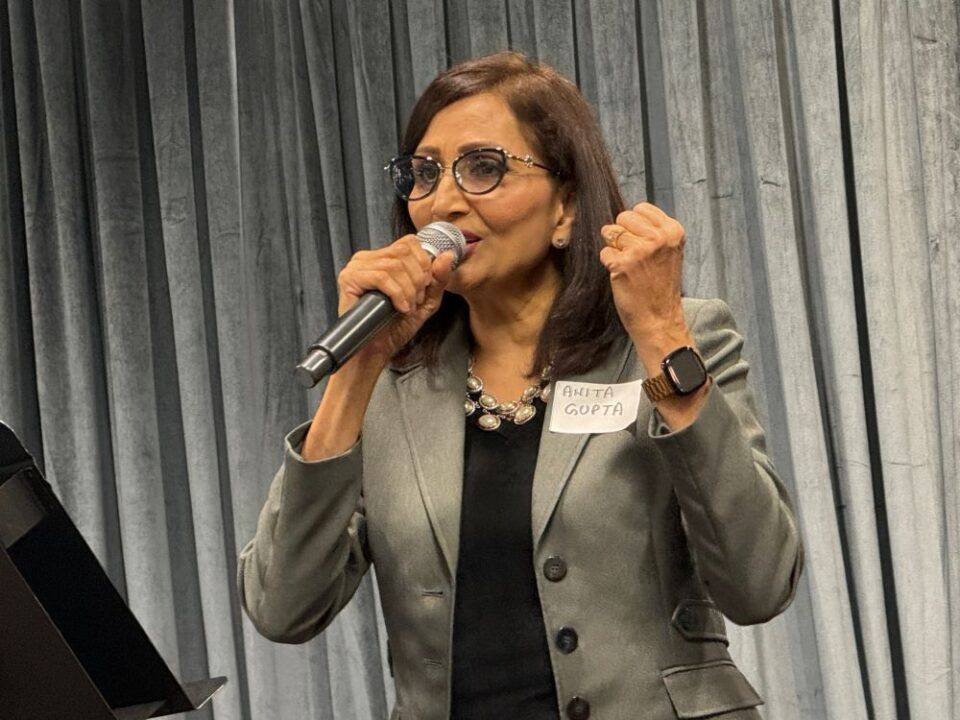BY VEENA RAO
In a conversation with NRI Pulse, Johns Creek City Council Post 1 candidate Anita Gupta discusses the tone of the current campaign, her priorities for public safety and responsible growth, and why she believes the city must take a more forward-looking approach. Gupta, a 30-year resident, says her campaign centers on transparency, fiscal discipline, and “future-proofing” Johns Creek while preserving its quality of life.
Some voters feel this campaign has turned unduly negative. Why do you think negative campaigning is necessary?
We’ve all lived in this city as neighbors and friends for more than 30 years. My campaign is not about running against an individual — it’s about addressing the real challenges and issues our city faces today and their future implications. I believe we should focus on ideas and solutions while respecting one another’s views. Calling out real deficiencies, concerns, and issues with factual numbers that need to be brought to the public isn’t a negative campaign, although my opponent might want to call it that to hide those facts instead of proving them incorrect. Numbers and facts don’t lie.
Johns Creek was recently ranked the #1 place to live in the U.S. Why do you think Johns Creek needs change?
We all love this city and are proud to live in Johns Creek — what you see today is the reflection of two decades of hard work by the previous council of 16 years. Their vision, wisdom, foresightedness, and fiscal discipline brought us to where we are today. Not to mention our law-abiding, highly educated, and professional residents, brilliant students, and great teachers who made our schools and city highly desirable. Johns Creek has been in the list of most desirable cities since 2017. These are not new accolades. The current council is doing a good job executing those plans previously conceived, planned, and approved.
However, we cannot afford to become complacent and make unwise decisions. Some current council members seem to assume that tomorrow will automatically be as bright as today. They seem to have lost their direction and are pushing for agendas that would be seriously detrimental to the long-term financial health of the city.
Our city is rapidly changing — with plans for high-density housing in the Medley and Shakerag area, large mixed-use developments, and new entertainment venues. These projects will inevitably affect our already bad traffic situation, safety, and overall quality of life.
Due to current and future increased population demand, some essential needs identified and requested by our fire and police chiefs have been ignored and hidden, which is extremely concerning. The police chief sent a nine-page memo requesting critical needs. However, a few of our council members, including my opponent Councilman Tunki, chose to vote against it while approving the 2026 budget.
I will make investments to strengthen public safety and future-proof our city — so Johns Creek remains the best and safest place to live not just today, but for future generations.
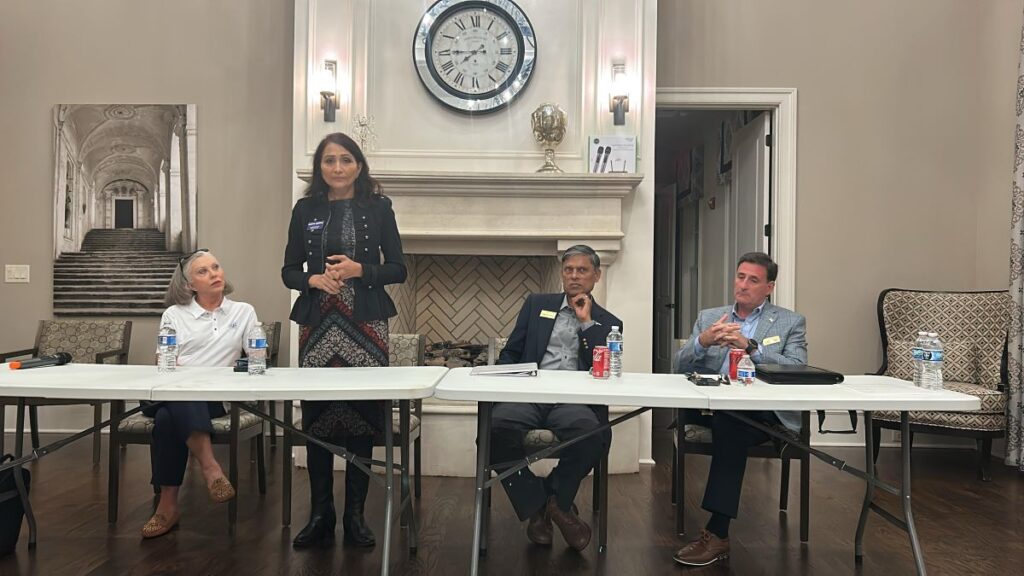
If you’re elected, what will your top three priorities be in your first year — and how will they be different from what the council is doing now?
Safety First: Public safety is the top priority our residents expect from their city council. Unfortunately, council members are currently not allowed to speak directly with department heads such as the Police and Fire Chiefs to understand their critical needs. As a result, some of their essential requests for personnel and equipment were ignored, hidden, and unaddressed in the upcoming budget. I will strongly advocate to ensure our first responders have the full resources they need to keep themselves and our community safe.
Protecting Quality of Life: Johns Creek is known for its exceptional quality of life, and that’s why many of us chose to live here. However, the city seems to be rushing into large, high-density developments — such as at Shakerag with 189 homes clearly violating the area’s comprehensive plan, and The Medley adding close to 900 apartments and townhomes — without fully addressing the impacts on traffic, safety, and stormwater management. Growth must be managed responsibly and in a resident-first manner. Before approving more major projects, we must solve the issues already affecting our neighborhoods. I will prioritize improving traffic solutions at many choke points in the city and completing the unfinished capital projects before starting any new ones. At this point, the city has $110 million worth of unfinished parks and recreation projects waiting to be funded.
Independent Leadership: After watching publicly available council meetings and work sessions of the last four years, except for two cases in 2022, Councilman Tunki has simply endorsed and rubber-stamped everything the Mayor has proposed without weighing and fully debating the merits of each issue. I will bring an independent, resident-focused perspective — one that listens, questions, and makes decisions based on what’s best for our community, not on favoritism.
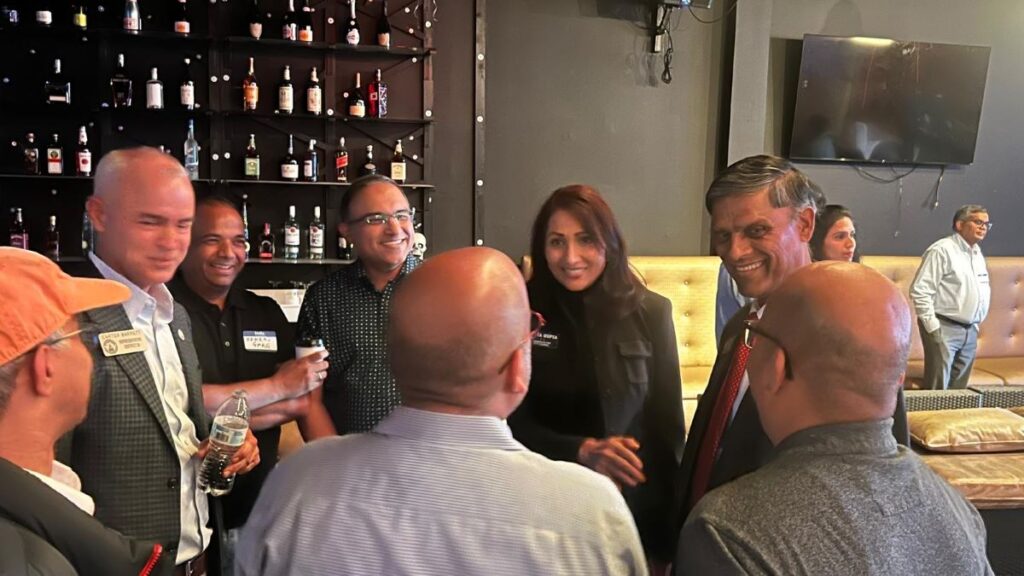
Councilman Tunki points to fast police and fire response times and says services are fully funded. What exactly is missing, and how would you fix it?
While I take pride in the fact that Johns Creek is one of the safest cities, the claim of a police response time of 1.1 minutes is nothing but a fallacy. According to ChatComm, the agency that processes 911 calls for Johns Creek, they are counting 0.00 minutes when they pull you over for a traffic violation, and 1.1 minutes when there’s an accident and a patrol officer happens to be nearby. Otherwise, how many times has anyone called 911 and had the police show up in 1.1 minutes? It’s simply not possible. When you remove this data, the average time comes to 5.26 to 7.47 minutes per 911 call. While that’s still not bad, the “average time” isn’t good enough when it comes to life-and-death situations. In some cases, the response time has been up to 18 minutes, resulting in loss of lives. We have significantly lower per capita public safety personnel than our neighboring cities.
Additionally, Johns Creek is growing rapidly, with several large residential and commercial developments underway. These projects will bring more traffic, more criminal activity, and greater demand for new public safety resources. Unfortunately, the proposed 2026 budget is based on the status quo, not the city’s future needs. It neglects the critical requests from our public safety departments for additional personnel, equipment, and infrastructure.
To keep Johns Creek safe and responsive, we must take a forward-looking approach — one that proactively invests in our police and fire departments before problems arise. My focus will be on future-proofing our public safety services so our residents continue to receive the same high level of protection as the city grows.
If you had to improve one key service for residents — like police, fire, roads, or parks — what would it be and why?
All of these essential services must be treated as top priorities. However, if I had to focus on one while continuing to strengthen the others, I would still choose two: public safety and traffic improvements.
Investing in smarter traffic management, adding left-turn lanes, and creating safer intersections deliver multiple benefits — saving residents’ time, reducing pollution, improving safety, and enhancing quality of life. Time saved on the road can be spent with family, at our parks, or supporting local businesses. Improving our transportation infrastructure is not just about convenience — it’s about creating a more connected, healthier, and balanced community for everyone.
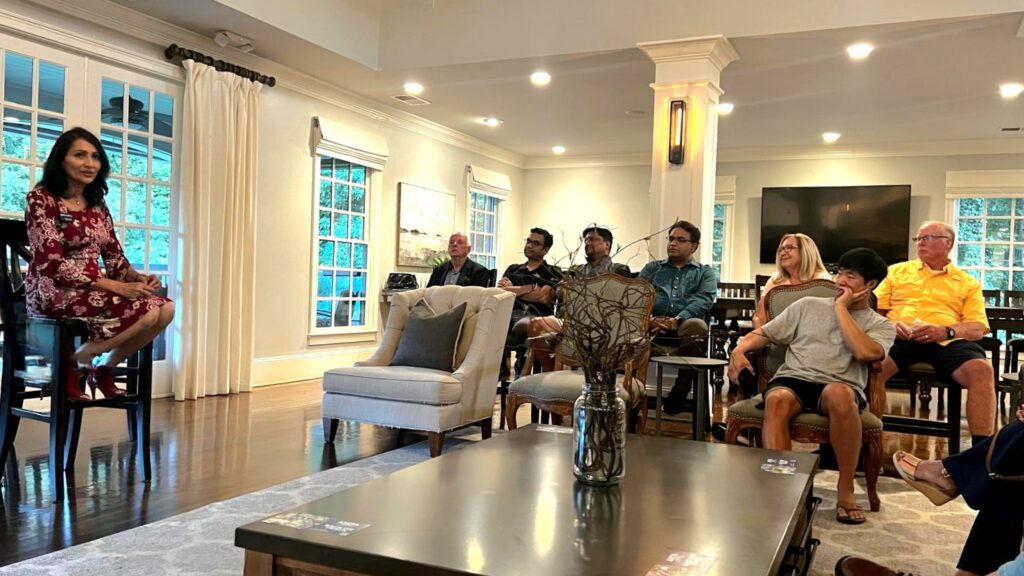
The city is investing in big projects like the Maker Space, the Boardwalk Park, and the $600 million Medley development, calling them forward-thinking investments. You’ve warned against overambitious spending. What are your views about these projects?
I am not opposed to development, as long as it is balanced, fiscally responsible, and aligned with residents’ priorities while adhering to the comprehensive plan. My concern is about the way some of these projects are being approved — often without addressing concerns about traffic, safety, and unnecessary debt that could lead to increased taxes and change the character of our city.
The Maker Space is a great initiative meant for our brilliant students who could use this space to turn their creative ideas into reality. I only wish the city had repurposed and refitted the existing 14,000-square-foot building, which would have cost $2.8 million. But due to Mr. Tunki’s unwarranted interference, it was reduced to 10,000 square feet at a cost of $2.4 million. So while he claims to have saved the city $400,000, the fact remains that it cost a reduction of 4,000 square feet. The city will now pay $240 per square foot instead of $178, and there’s no guarantee the project will stay within budget.
The Boardwalk Park will be a beautiful space behind City Hall with a lake, amphitheater, and walking path, but it comes at a cost of $40 million in taxpayer money. We’ve already spent $40 million on Cauley Creek Park nearby, and only 40% of it is complete because the money ran out. These parks do enhance quality of life, but I would focus on finishing what’s already started before taking on new debt.
The Medley is a privately funded project by a large developer. However, it will cause major challenges to already congested traffic and impact safety. As a council member, I will focus on fully funding public safety and improving traffic solutions first.
Which projects would you stop or scale back because you think they’re not a good use of taxpayer money?
It’s not about stopping or scaling back projects arbitrarily — it’s about ensuring that every major investment is backed by solid data, transparency, and thoughtful planning. Before committing taxpayer dollars, the city should clearly present the costs, benefits, and long-term impacts to residents. A good example is the proposed Performing Arts Center.
You’ve questioned the cost of the Performing Arts Center. What’s your alternative plan for supporting arts, culture, and community events?
Like most people, I’m a strong supporter of the arts and believe they greatly enrich our lives. My concern is the lack of transparency and financial due diligence behind this proposed project. The city has not presented a complete or accurate picture of the true costs.
Residents are being told that the Performing Arts Center will cost around $60 million, with a $40 million bond resulting in roughly $90 in additional taxes per property. However, those figures are misleading — they rely on outdated construction costs, underestimate home values, and ignore annual principal payments. The true cost could exceed $100 million once land, interest, and inflation are accounted for, with a tax burden two to three times higher than advertised.
Before moving forward with such a massive commitment, the city should present fact-based data, feasibility studies, and a clear operational plan to residents.
Johns Creek already has access to 29 performing venues within a ten-mile radius — most of which operate at a loss — including centers in neighboring cities, amphitheaters, and school auditoriums. Instead of building another costly facility, we should maximize use of existing spaces, collaborate with local organizations and schools, and create a sustainable arts program that unites residents without burdening taxpayers. If budget allows, a scholarship program for talented young artists could also be a great initiative.
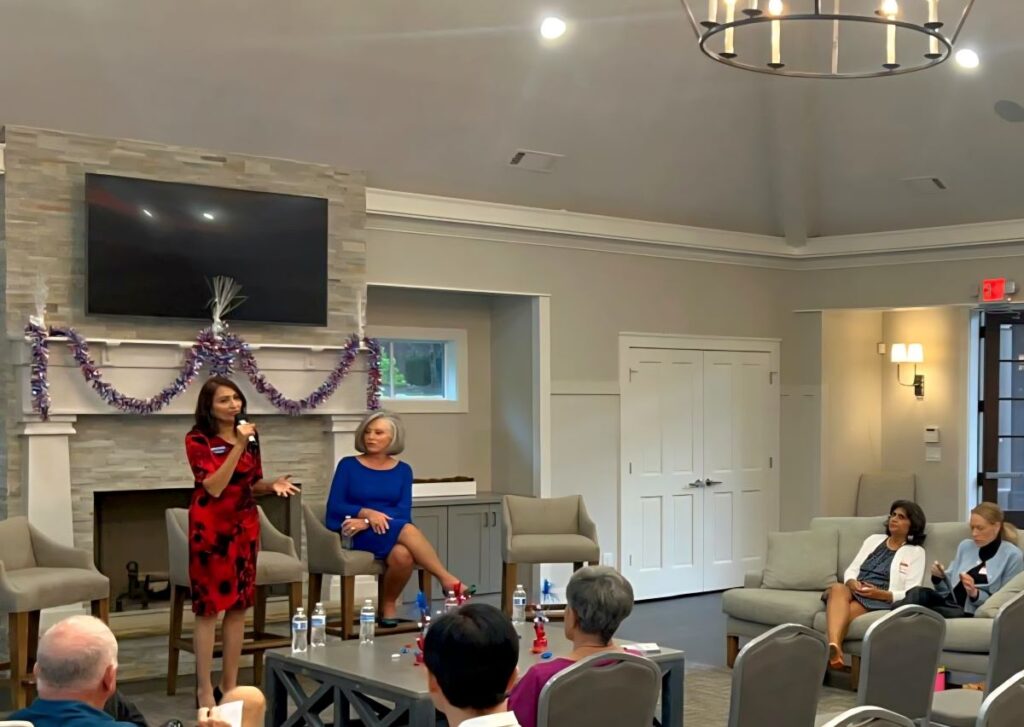
Johns Creek is becoming more diverse. How will you make sure city projects reflect the needs of all communities?
Johns Creek’s diversity is one of our greatest strengths. Our city is home to residents from many cultures and backgrounds who share the same goal — to make Johns Creek a great place to live, work, and raise a family.
To ensure city projects reflect everyone’s needs, we must actively engage residents in planning and participation. The city should partner with local cultural organizations to host festivals and community gatherings that highlight our shared values and traditions. Providing free or low-cost access to parks, amphitheaters, and community spaces will make these events more inclusive and accessible.
As our population grows, we should also invest in an additional senior recreation center in the north part of the city, ensuring all residents have access to quality services and facilities. Every project must be ADA-accessible, include adequate restrooms and amenities, and serve the needs that unite our community while respecting what makes each cultural group unique. By listening first and planning together, Johns Creek can truly reflect and celebrate its diversity.
Both you and Councilman Tunki come from the Indian American community, which is proud to see representation on the city council. How do you see your candidacy as different, and what do you offer that voters should consider?
The key difference is motivation. My candidacy is rooted in service, not politics or personal gain. While others may focus on alliances and special interests, I bring an independent, resident-first approach. Every decision I make will be guided by what’s best for Johns Creek — carefully weighing cost, public safety, quality of life, and long-term impact. I will not simply “go along to get along.”
I’ve lived in Johns Creek for over 30 years and plan to retire here, so my commitment is long-term and personal. My focus is not on political advancement, but on making responsible, common-sense decisions that keep Johns Creek the best place to live, work, and raise a family.



